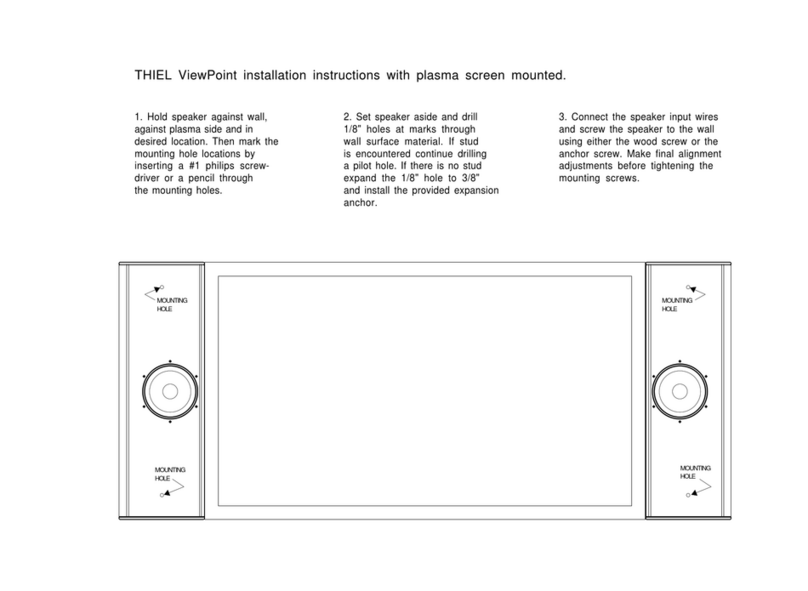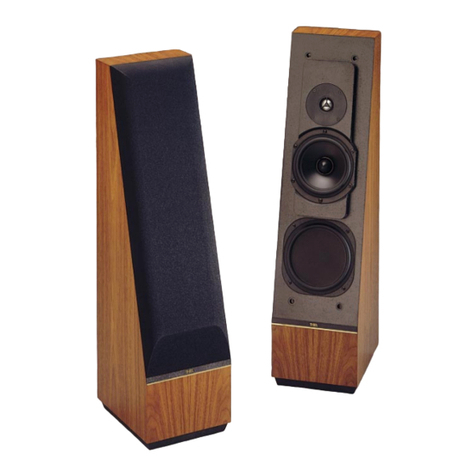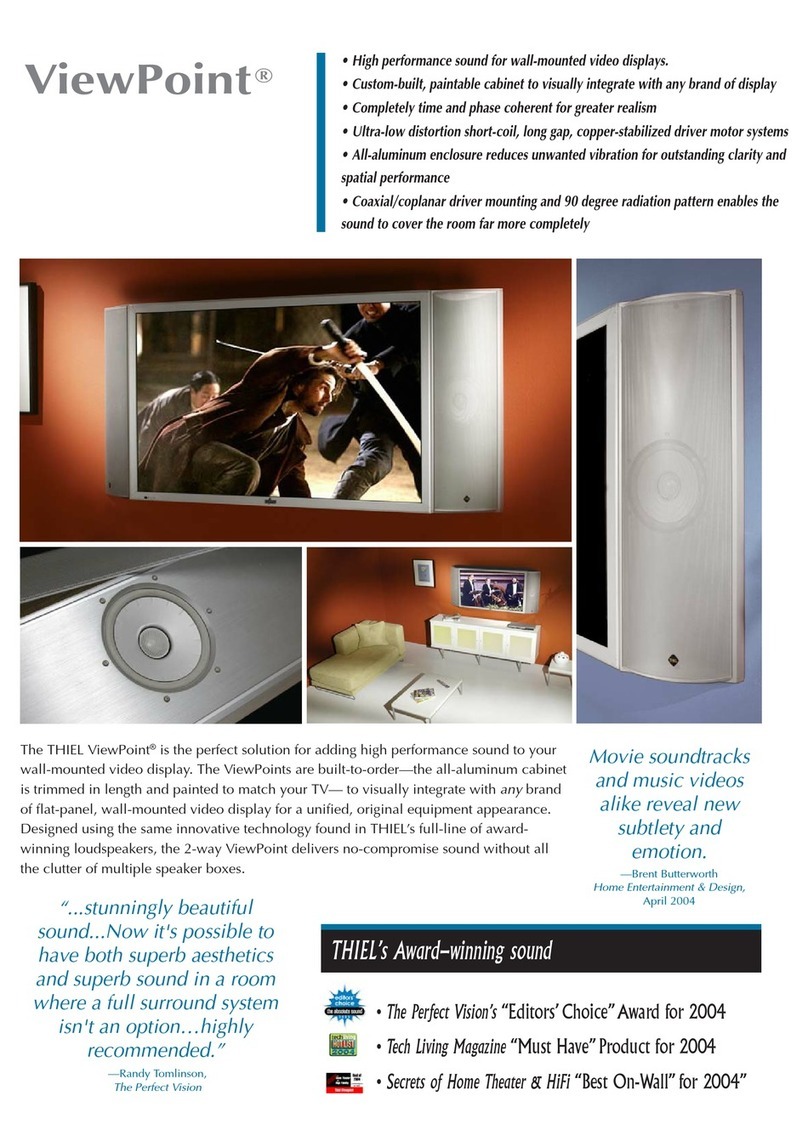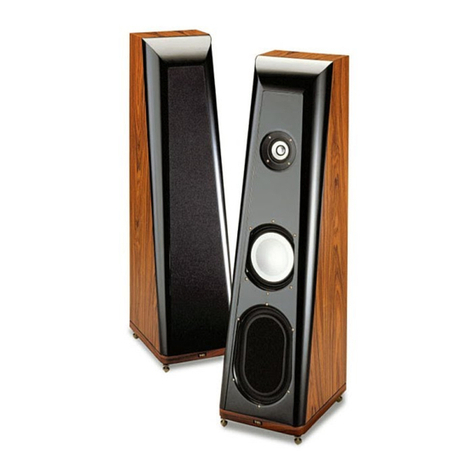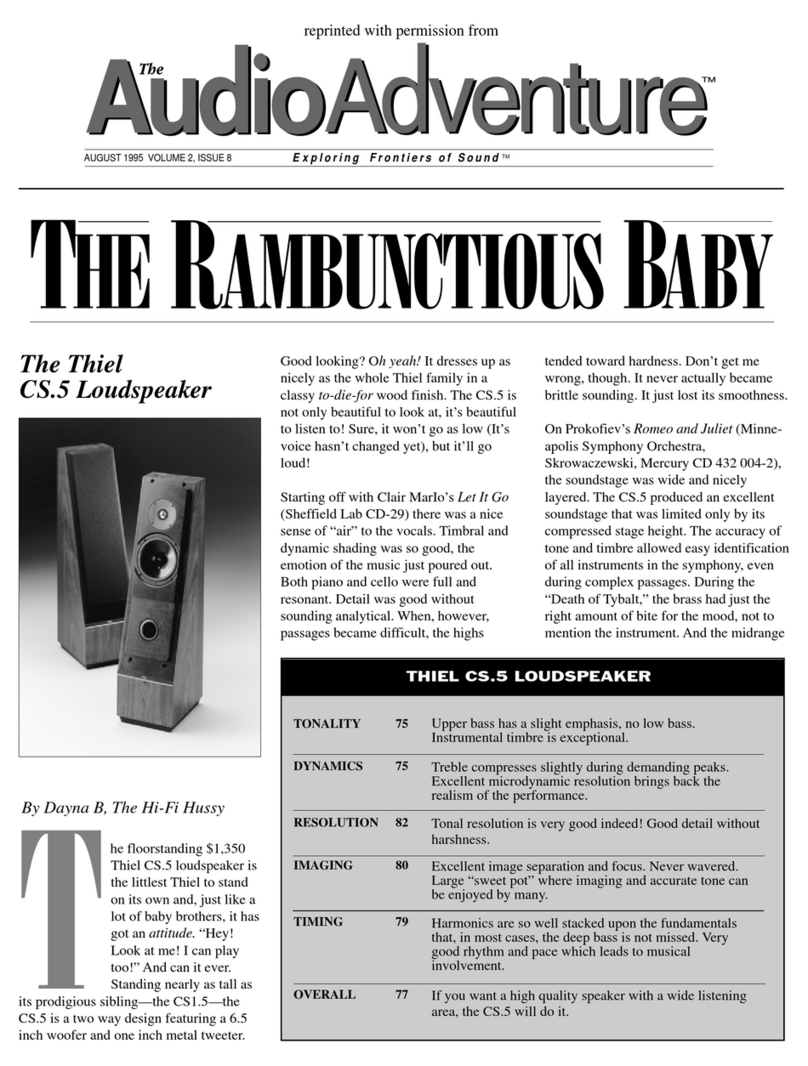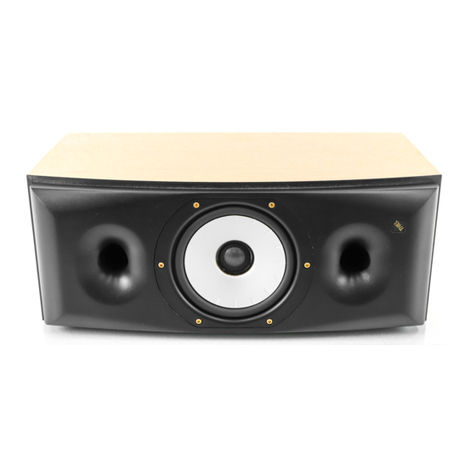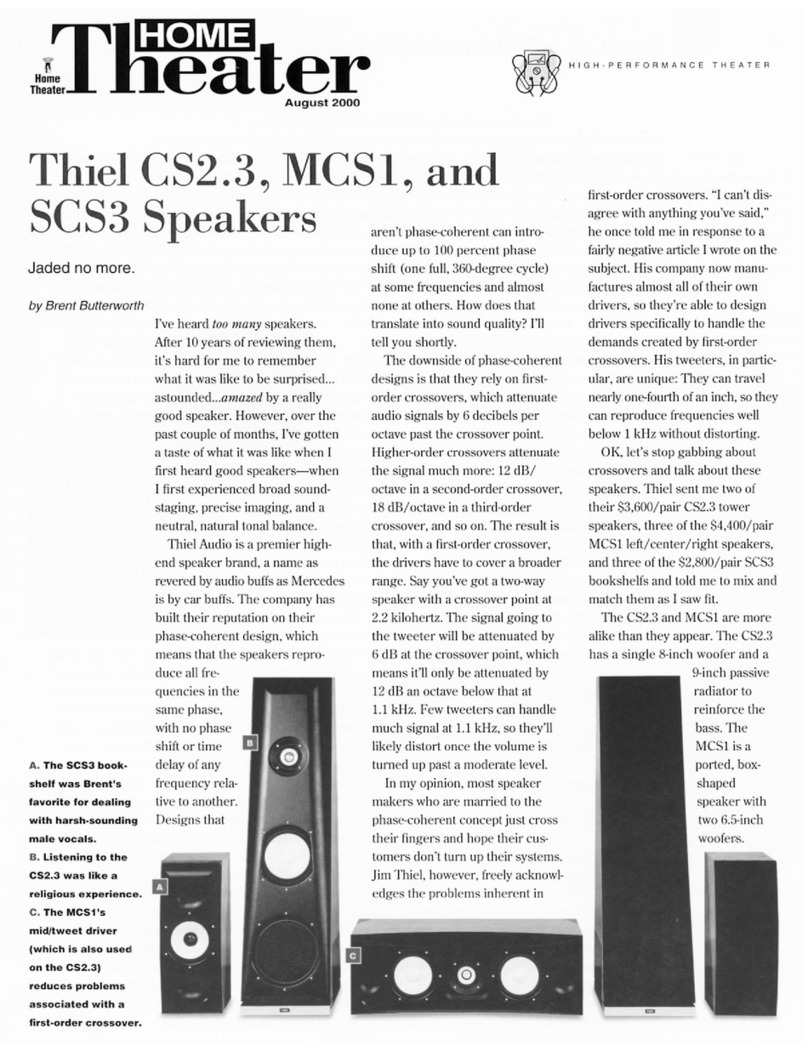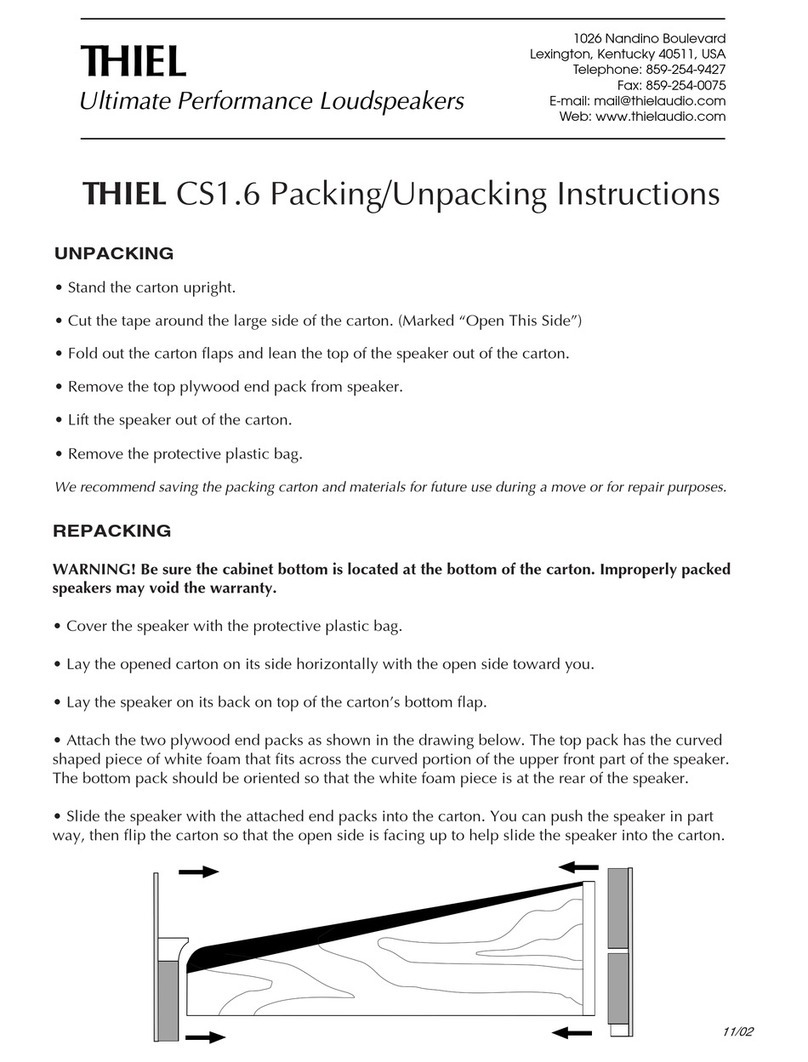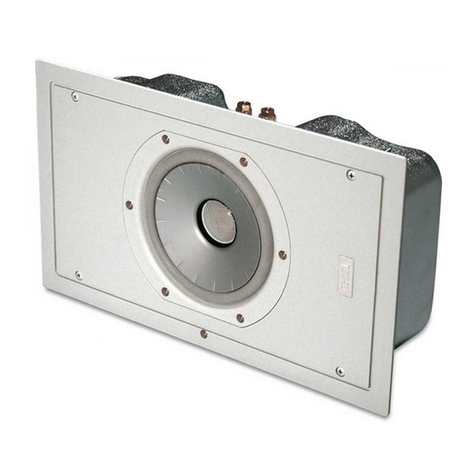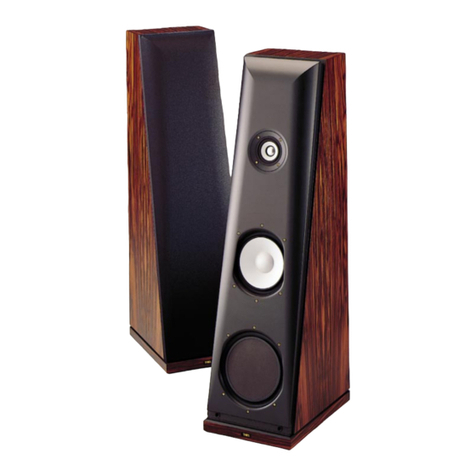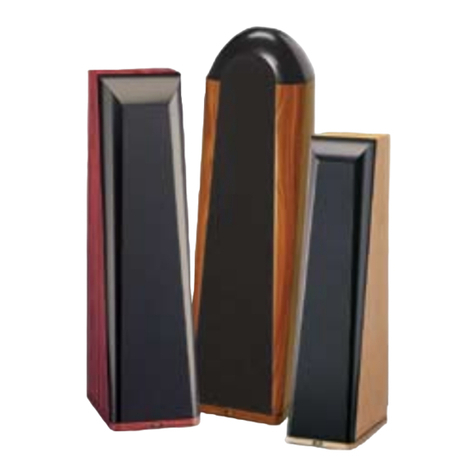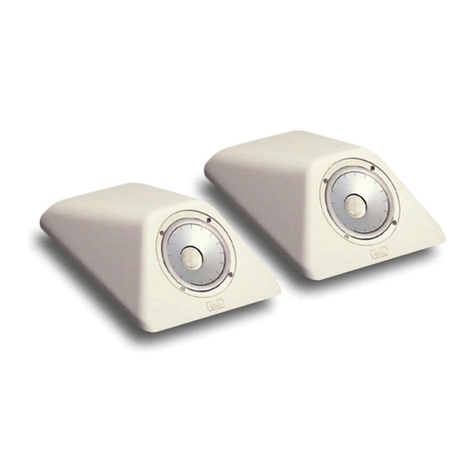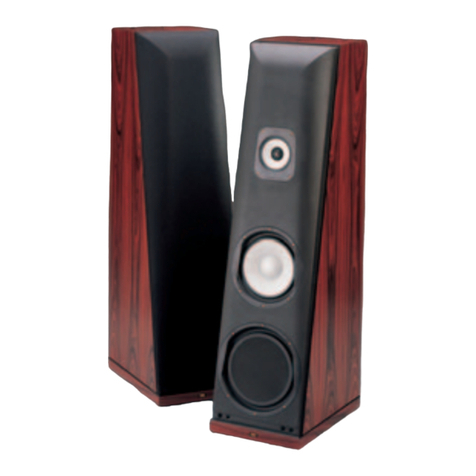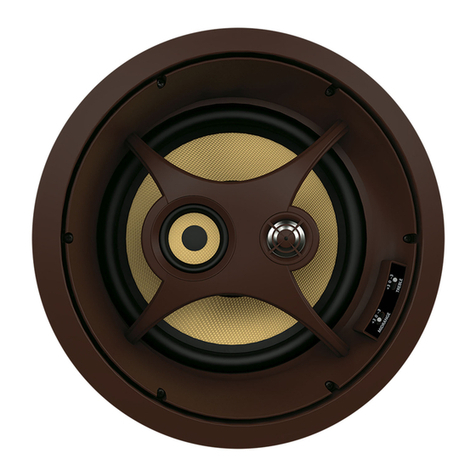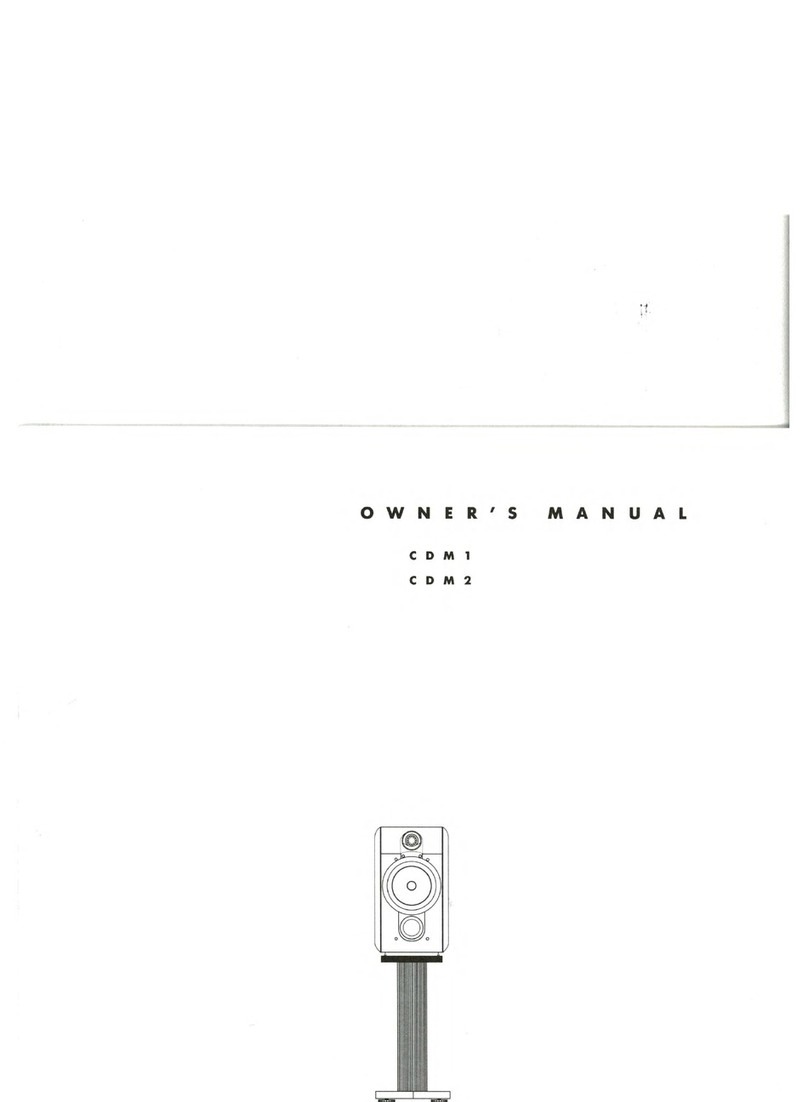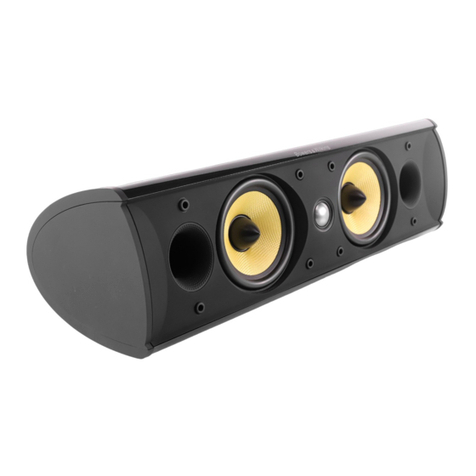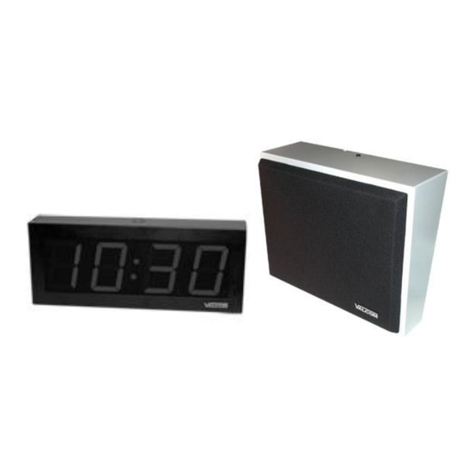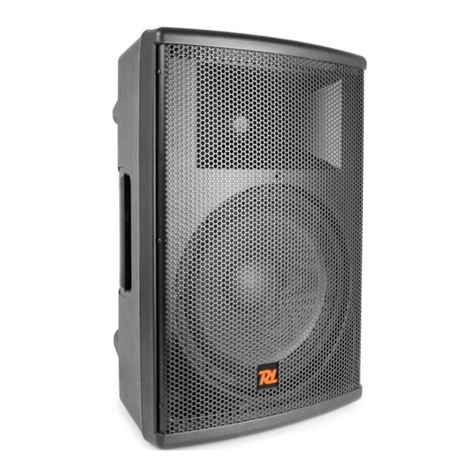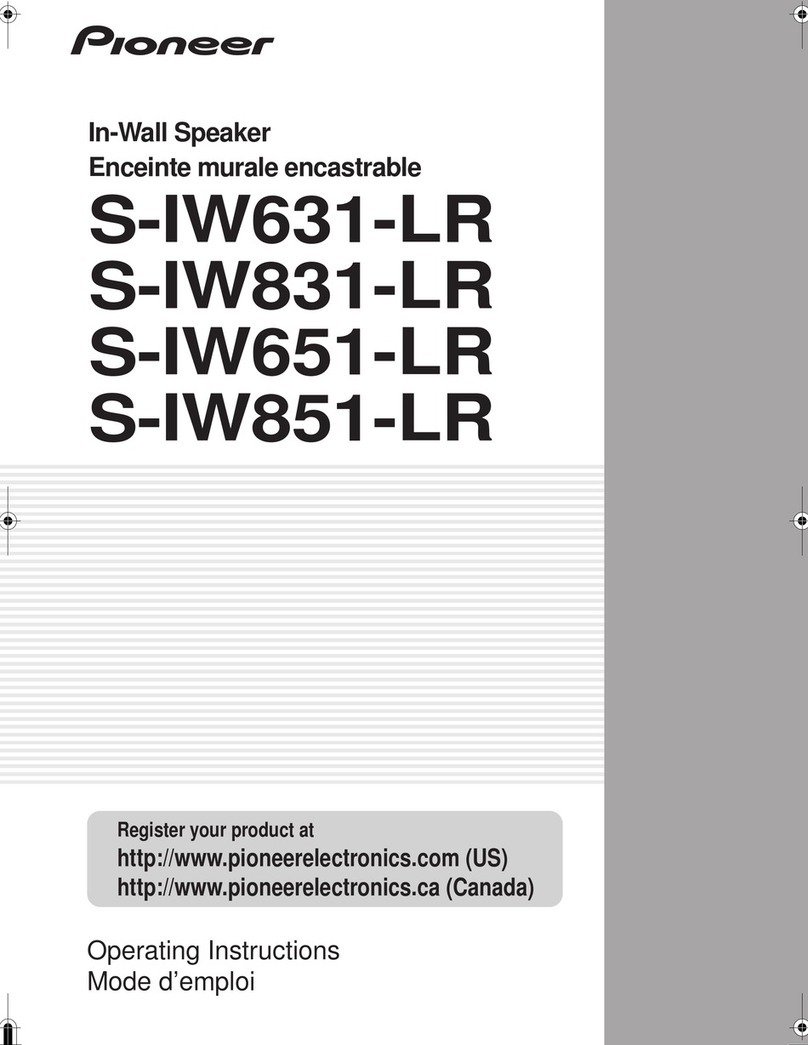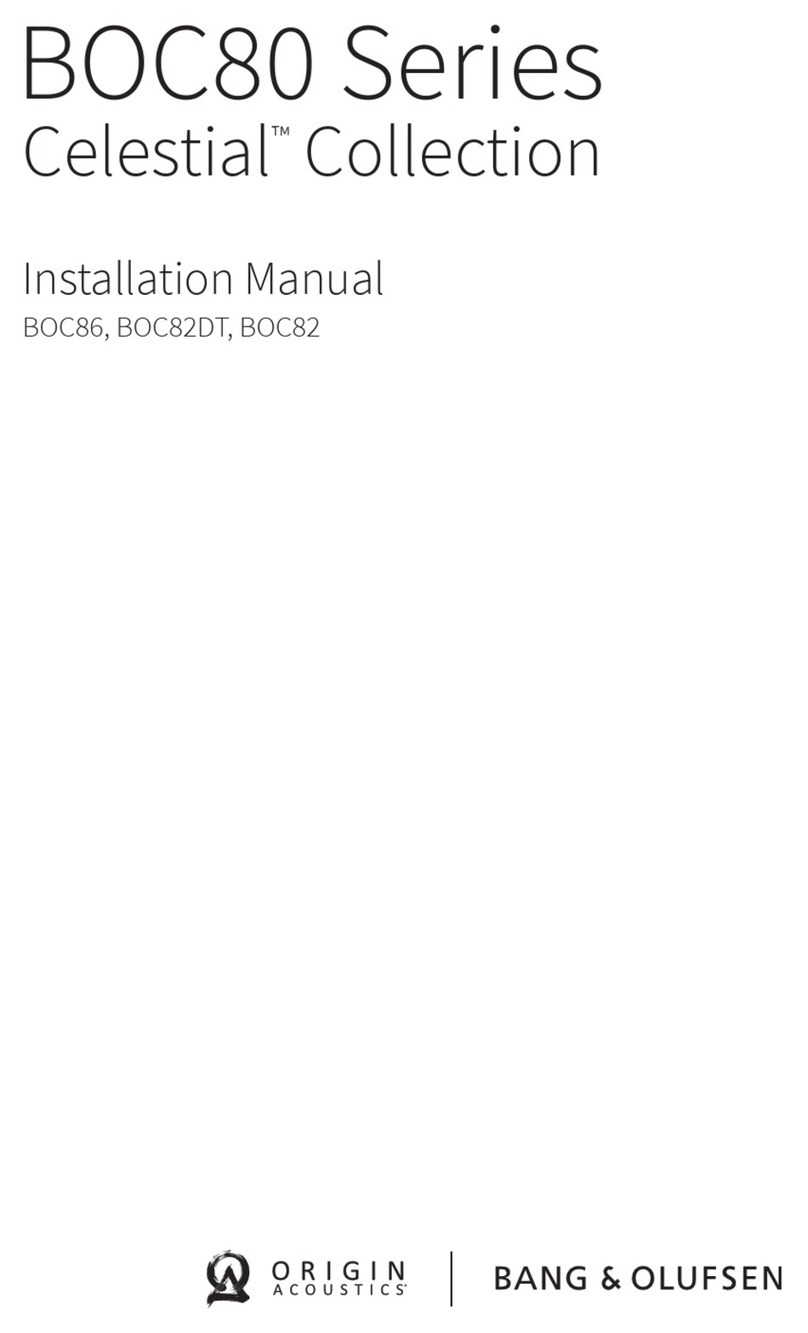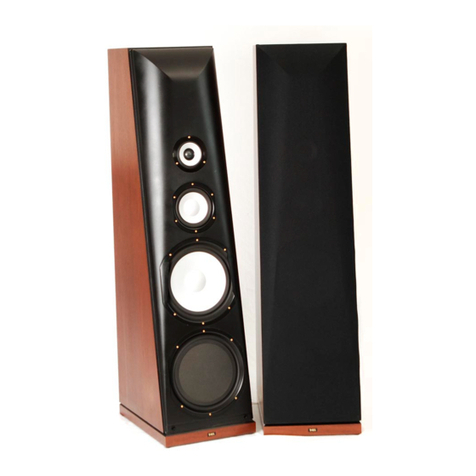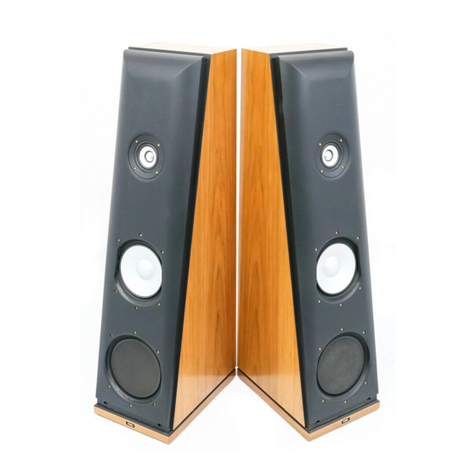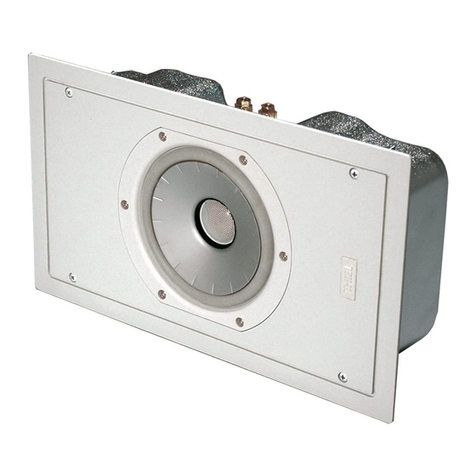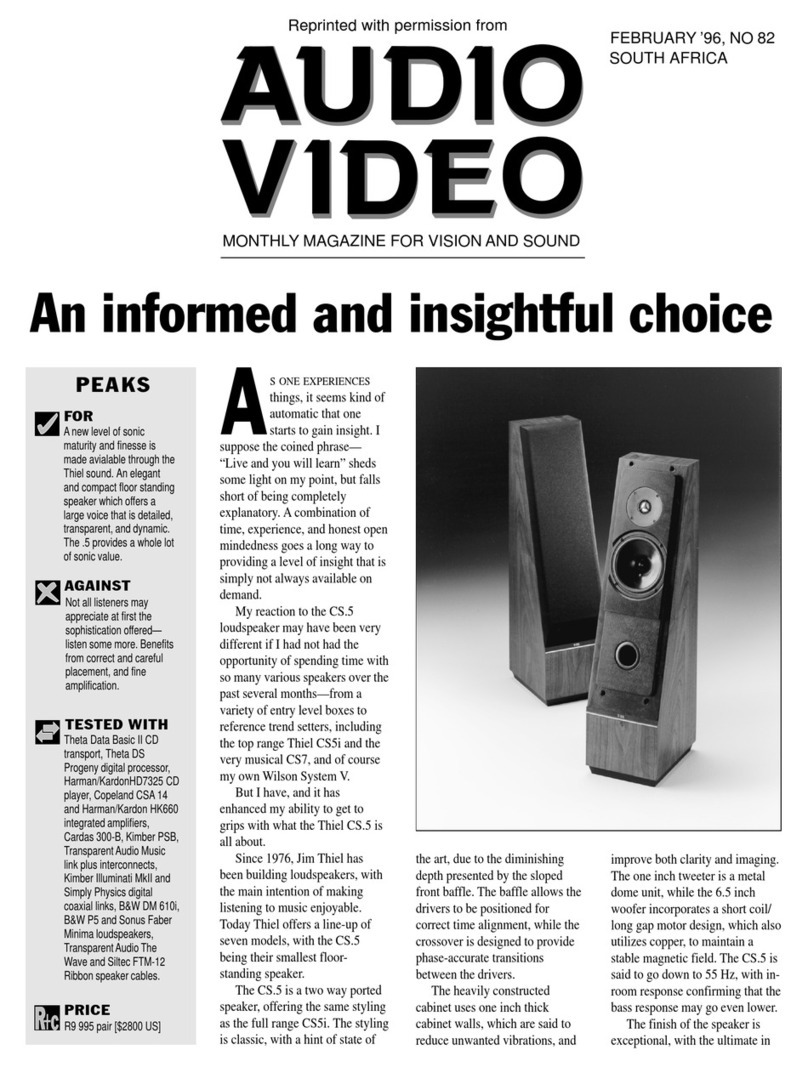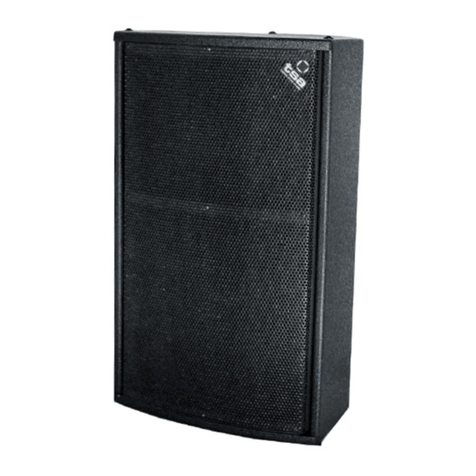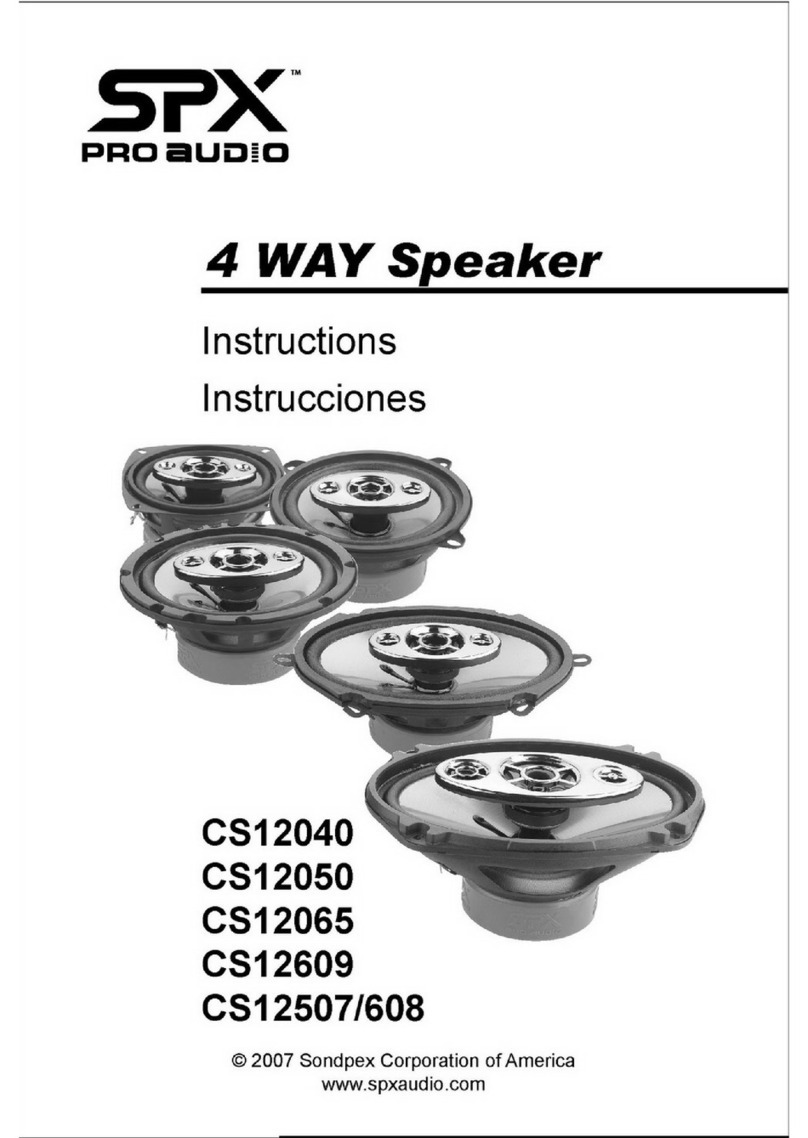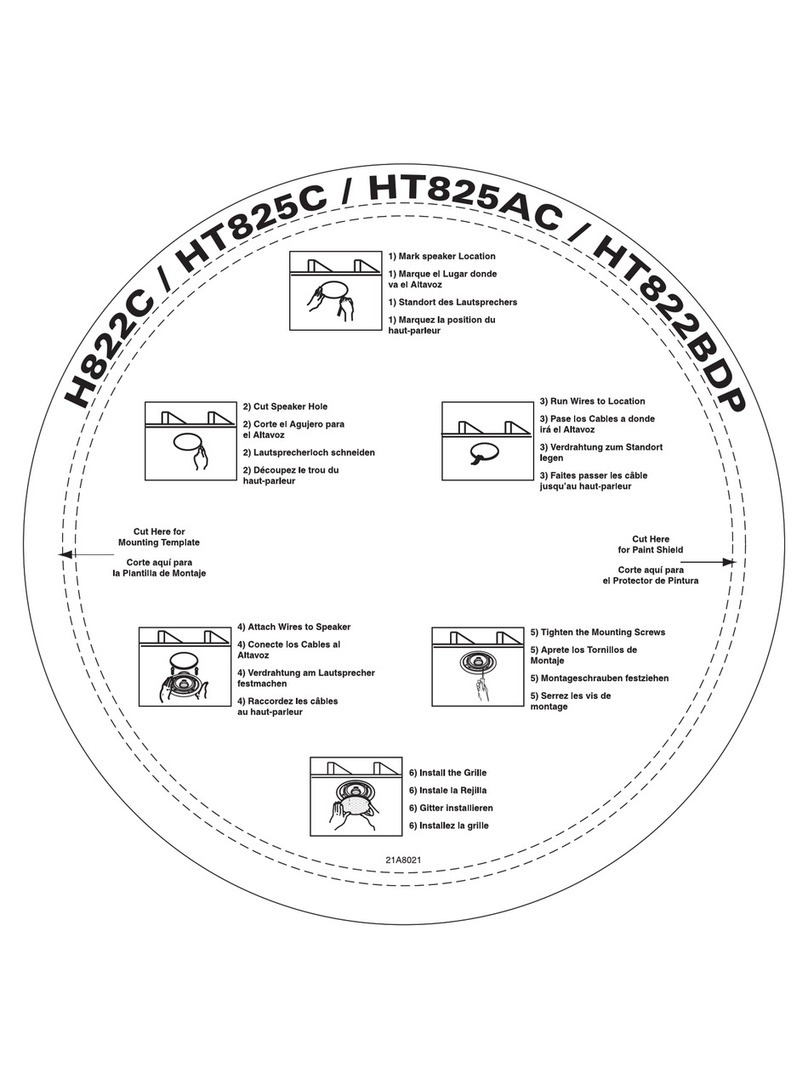
ThIEL Cs2.7
LOudspEAkER
losing center ll or exaggerating the size of solo instruments or small musical
groups, and depth is about as good as your room, speaker placement, and
listening material permit. I would recommend a carpeted oor over a wood
oor for listening to the CS2.7s at reasonable distances, though it was no
more vulnerable to oor reections than other oorstanding speakers of its
size, and less so than many.
The cabinet shape and design obviously play a role here as well. The front
bafe is not as sculptured or physically “time-aligned” as some other speaker
designs, but the cabinet is tapered at the top, relatively narrow (11"), and
relatively deep (16.7").
The cabinet is also exceptionally well-braced inside, and replaces the one-
inch-thick MDF cabinet walls in previous CS2 Series models with much
stronger curved plywood. It uses a 3"-thick front bafe to mount the drivers
and three solid 1"-thick internal braces, the top one of which seals the
coaxial enclosure from the bass chamber. No parallel surfaces exist anywhere
inside the cabinet, limiting the development of standing waves. It is not as
mass-damped as some competing speakers. The CS2.7 weighs only (“only?”)
77 pounds. However, its structure and an excellent spiking system make it
exceptionally vibration-free even at volumes above 90dB.
This almost certainly contributes to its exceptional midrange coherence,
as does what is clearly an exceptional crossover design that blends the treble
and midrange in the Coaxial Coincident Driver near seamlessly with the
lower midrange and bass.
The Bass
If there is any trade-off in cost and size, it lies in the deep bass, but the trade-
off is much smaller than I expected. The CS2.7 has only an 8" woofer, but it
is supported by an oval passive radiator. Thiel also claims that this woofer has
“distortion that is 1/10th that of typical woofers of this size. The magnetic
system is a Thiel proprietary short-coil/long-gap design whereby the voice
coil never exits the ultra-strong and stable magnetic eld set up inside the gap,
thus helping the amplier exert complete control over woofer motion. The
motor structure is stabilized by sheathing the center pole with a copper sleeve,
and by including a copper shorting-ring at the base of the back plate. The
rst of these measures dramatically reduce the inductance of the voice coil
thereby ensuring that the frequency response of the driver is not modulated
by the motion of the coil over the pole. The copper shorting ring guarantees
that the voice coil’s magnetic eld (again, analogous to the signal from the
amp) always reacts against a rigid and xed magnetic eld as set up by the
magnet.”
Once again, I can’t validate any given set of technical or design claims, but
Thiel has long produced some exceptional woofers and passive radiators,
and the CS2.7 did meet its specication of relatively at power output down
to nearly 35Hz in the best location in my listening room when I measured its
response using a mix of pink noise, bass warble tones, an AudioTools RTA
and FFT routine, and an iTestMic.
The bass was not only extended, it was also very smooth with the right
room location, and very tight and detailed. As is usually the case, it also
initially sounded a bit limited until I ran it through the usual range of bass
spectaculars and test tones. Unlike many other speakers, the fact that the
CS2.7's bass does not have some inherent coloration or peak means that the
deeper bass really is deep, rarely produces massive power, and does not have
some form of “overhang” on deep bass transients.
This is not the ideal speaker to try to blast away with the opening organ
tone in Thus Spake Zarathustra, Saint-Saëns Symphony No. 3, or the kind of
electronic music and rock whose main musical virtue seems to be vibrating
your house or driving the neighbors in your apartment
building to manslaughter. You won’t get the same bass
with Kodo drums or the Telarc bass drum records as
you do with the CS3.7s or the subwoofer built into
my Vandersteen Model 5 Carbons, and you won’t get
the ultimate impact of an exaggerated deep bass line
in a vocal like the Jennifer Warnes’ recording of “Way
Down Deep” (The Hunter).
But for the other 97% of music you will get very
extended bass that will take you to the real-world
limits of the bottom octaves and do so with minimal
coloration. I’d also suggest that for most audiophiles
who are not total bass freaks, this can actually be
better than speakers that do have subwoofer-like bass.
The last 5 or 10Hz often come at a major cost in
room interactions the moment they actually appear.
This can sound dramatic for a while, but resonance,
room vibrations, etc. become a pain in the, er, ear
once you really start listening for extended periods.
(There is also enough extraneous deep bass on some
recordings to produce low-level room-effects almost
without you realizing or expecting it.)
In short, the CS2.7 has real bass for real music for
real people in real listening rooms. It may choose
overall accuracy from the top treble to deep bass over
exaggerated output in the deepest bass, but life is a
series of tradeoffs and this is a case where I feel Thiel
has made all of the right ones.
Compatibility and Interfaces
As for compatibility, the CS2.7 has no rear-panel
adjustments and no options for bi-amping or bi-
wiring—not that it seems to need such features. It
was not sensitive to any given speaker cable I had, but
clearly revealed the differences between the ranges of
AudioQuest and Kimber Cables I use as references.
It also produced the sound I expect from a range of
solid-state and tube ampliers, including my reference
Pass Labs XA160.5s and the Cary CAD 120S II, and
did not seem an unusually demanding load.
The CS2.7’s bass performance did, however,
benet from higher-current ampliers with higher
damping factors. I’d recommend a solid-state amp
with at least 100 watts and high current capability. As
for listening levels, the CS2.7 was clean with music
to levels of 110dB, although I did not explore its
possible use a rock monitor driven consistently to
levels of 120dB or more—levels that have no place
in high-end listening where anyone cares about his
hearing.
I recommend front ends, preampliers, and
ampliers that are neutral to warm, and avoid ones
that are a bit hard or bright. As least with classical and
other acoustic music, the CS2.7’s timbre is neutral but
does not have any added warmth or roll-off in the
upper midrange and highs.








